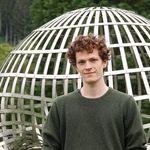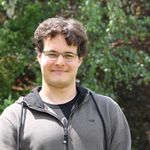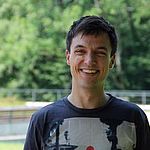The main goals of the project are as follows:
- Solve the asymptotic Plateau problem in nonpositively, respectively negatively curved spaces / groups. Analyze solutions and find applications.
- Study conformal changes of spaces with upper curvature bounds and find a new approach to Reshetnyak's theory of surfaces with upper curvature bounds.
- Investigate the analytical, geometrical and topological properties of geodesic surfaces with quadratic isoperimetric inequalities and study the compactification of the class of such surfaces.
- Find optimal isoperimetric inequalities for curves in normed spaces and applications to regularity of minimal surfaces.
- Construct minimal surfaces in metric spaces by topological methods and / or min-max techniques.
Publications
We show that the class of CAT(0) spaces is closed under suitable conformal changes. In particular, any CAT(0) space admits a large variety of non-trivial deformations.
| Journal | Math. Ann. |
| Link to preprint version | |
| Link to published version |
Related project(s):
24Minimal surfaces in metric spaces
A surface which does not admit a length nonincreasing deformation is called metric minimizing. We show that metric minimizing surfaces in CAT(0) spaces are locally CAT(0) with respect to their intrinsic metric.
| Journal | Geom. Topol. |
| Link to preprint version | |
| Link to published version |
Related project(s):
24Minimal surfaces in metric spaces
We prove that a minimal disc in a CAT(0) space is a local embedding away from a finite set of "branch points". On the way we establish several basic properties of minimal surfaces: monotonicity of area densities, density bounds, limit theorems and the existence of tangent maps.
As an application, we prove Fary-Milnor's theorem in the CAT(0) setting.
| Journal | J. Eur. Math. Soc. |
| Link to preprint version | |
| Link to published version |
Related project(s):
24Minimal surfaces in metric spaces
We prove an analog of Schoen-Yau univalentness theorem for saddle maps between discs.
| Journal | Geom. Dedicata |
| Link to preprint version | |
| Link to published version |
Related project(s):
24Minimal surfaces in metric spaces
We study the intrinsic structure of parametric minimal discs in metric spaces admitting a quadratic isoperimetric inequality. We associate to each minimal disc a compact, geodesic metric space whose geometric, topological, and analytic properties are controlled by the isoperimetric inequality. Its geometry can be used to control the shapes of all curves and therefore the geometry and topology of the original metric space. The class of spaces arising in this way as intrinsic minimal discs is a natural generalization of the class of Ahlfors regular discs, well-studied in analysis on metric spaces
| Journal | Geom. Topol. |
| Volume | 22 |
| Pages | 591-644 |
| Link to preprint version |
Related project(s):
24Minimal surfaces in metric spaces
We prove that a proper geodesic metric space has non-positive curvature in the sense of Alexandrov if and only if it satisfies the Euclidean isoperimetric inequality for curves. Our result extends to non-geodesic spaces and non-zero curvature bounds.
| Journal | Acta Math. |
| Volume | 221 |
| Pages | 159-202 |
| Link to preprint version | |
| Link to published version |
Related project(s):
24Minimal surfaces in metric spaces
We study geometric and topological properties of locally compact, geodesically complete spaces with an upper curvature bound. We control the size of singular subsets, discuss homotopical and measure-theoretic stratifications and regularity of the metric structure on a large part.
| Journal | Geom. Funct. Anal. |
| Volume | To appear |
| Link to preprint version |
Related project(s):
24Minimal surfaces in metric spaces
We relate the existence of many infinite geodesics on Alexandrov spaces to a statement about the average growth of volumes of balls. We deduce that the geodesic flow exists and preserves the Liouville measure in several important cases. The developed analytic tool has close ties to integral geometry.
Related project(s):
24Minimal surfaces in metric spaces
We give a solution of Plateau's problem for singular curves possibly having self-intersections. The proof is based on the solution of Plateau's problem for Jordan curves in very general metric spaces by Alexander Lytchak and Stefan Wenger and hence works also in a quite general setting. However the main result of this paper seems to be new even in $\mathbb{R}^n$.
| Journal | Comm. Anal. Geom. |
| Link to preprint version |
Related project(s):
24Minimal surfaces in metric spaces
Team Members
Paul Creutz
Doctoral student
Universität Köln
paul.creutz(at)ish.de
Prof. Dr. Alexander Lytchak
Project leader
Karlsruher Institut für Technologie
alexander.lytchak(at)kit.edu
Dr. Artem Nepechiy
Researcher
Karlsruher Institut für Technologie
artem.nepechiy(at)kit.edu
Dr. Stephan Stadler
Project leader
Ludwig-Maximilians-Universität München
stadler(at)math.lmu.de





